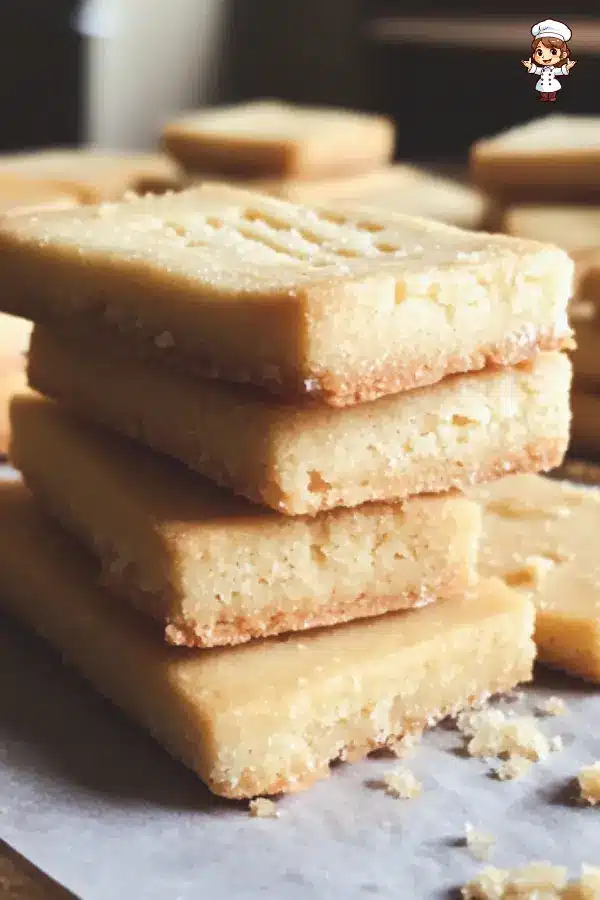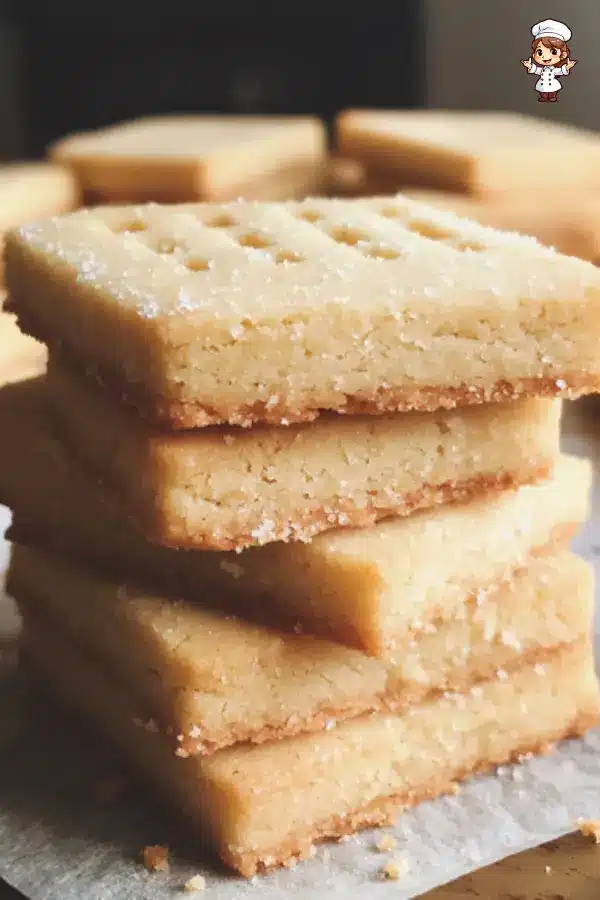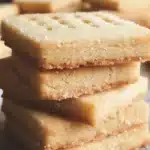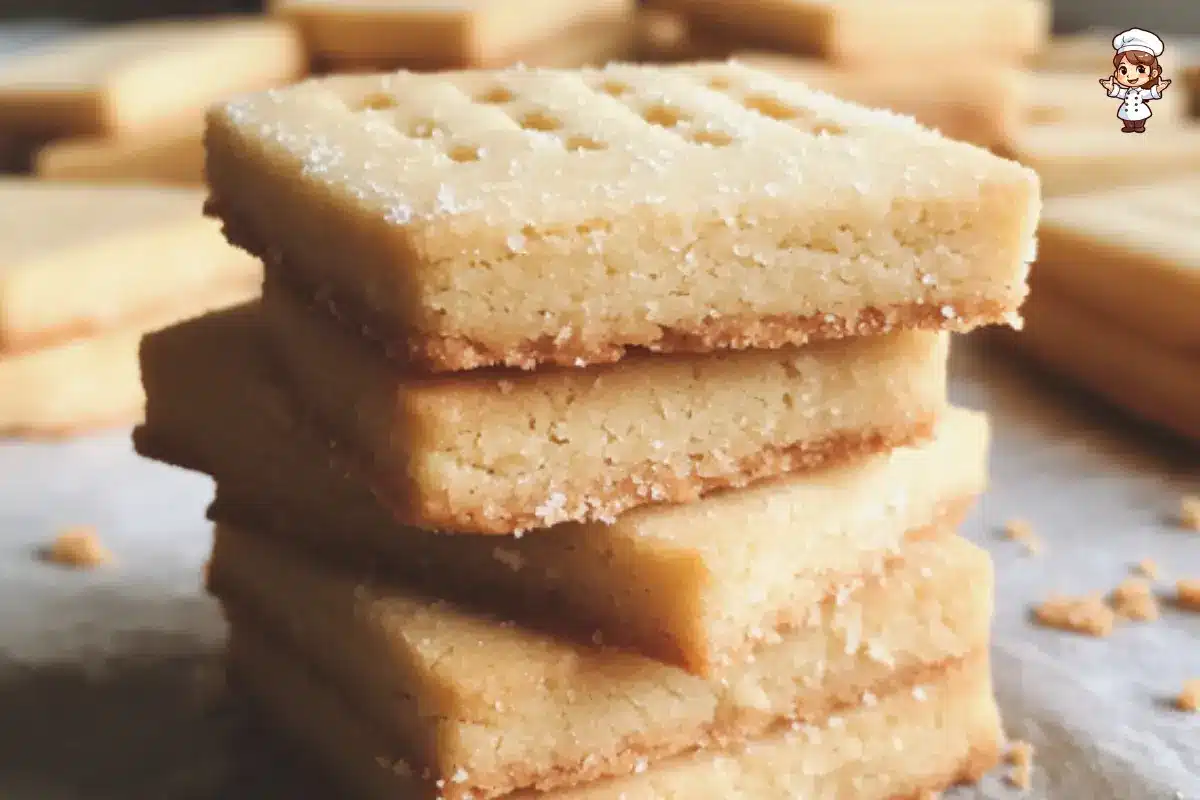Shortbread cookies are the perfect treat when you’re in the mood for something simple yet indulgent. These buttery, melt-in-your-mouth delights are the epitome of comfort food and can be enjoyed alone or with your favorite hot beverage. In this guide, we’ll walk you through everything you need to know about baking the best shortbread cookies. From understanding the basic ingredients and essential tips to exploring fun variations, we’ve got you covered.
So, whether you’re a novice baker or a seasoned pro, get ready to master the art of making shortbread cookies that will have everyone asking for your secret recipe. Let’s dive in!
Key Ingredients for Perfect Shortbread Cookies

Making the perfect batch of shortbread cookies starts with selecting the right ingredients. While the recipe might seem simple, the quality of each ingredient can make a big difference in the final result. Let’s break down the key components and how they contribute to creating those delicious melt-in-your-mouth cookies.
Butter: The Heart of Shortbread
Butter is the star of the show in shortbread cookies. It’s what gives shortbread its signature rich flavor and crisp texture. Always use unsalted butter for the best results, as it allows you to control the salt level in the recipe. Ensure your butter is at room temperature before mixing—it helps create a smooth, creamy dough without any lumps.
The Role of Sugar in Shortbread
Another essential ingredient in shortbread cookies is confectioners or powdered sugar. It adds just the right sweetness and gives the cookies a delicate texture. Unlike granulated sugar, powdered sugar blends more smoothly into the dough, contributing to that fine, melt-in-your-mouth experience. Using the right amount is key—too much sugar will make your cookies overly sweet, while too little might leave them tasting too plain.
Flour and Salt: Essential Building Blocks
The flour in shortbread provides structure and helps bind the ingredients together. For consistency, it’s best to use all-purpose flour. A pinch of kosher salt enhances the flavor and balances the sweetness, but it’s optional, depending on your preference. The right balance of these ingredients will give your shortbread cookies that classic, irresistible flavor.
Step-by-Step Guide to Making Shortbread Cookies

Now that you understand the key ingredients let’s move on to the most important part: making the dough and baking those golden, buttery shortbread cookies. This section will take you through every process step, ensuring your cookies turn out perfect every time.
Preparing the Dough
The first step is to cream the butter and vanilla extract together. Start by placing the softened butter in your stand mixer or mixing bowl. Beat it on medium speed until the butter is light and fluffy. Add the confectioners’ sugar and salt (if using) and continue mixing until it’s all combined. This step is crucial because it helps incorporate air into the dough, which gives the cookies their signature light texture.
Next, gradually add the flour while mixing at a low speed. It’s important to mix gently, as overworking the dough can lead to tough cookies. Once the flour is fully incorporated, scrape the sides of the bowl to ensure no dry bits remain.
Shaping and Chilling the Dough
Once your dough is ready, shape it into a rectangular or log prism. This makes it easier to slice into uniform pieces later. Wrap the dough in plastic wrap and refrigerate it for at least an hour. Chilling the dough is crucial because it helps the cookies hold their shape during baking and ensures they don’t spread too much.
Baking the Perfect Shortbread
Preheat your oven to 350°F (177°C). Once the dough is chilled and firm, remove it from the fridge and cut 1/2-inch thick slices with a sharp knife. Place the slices on a baking sheet lined with parchment paper or a silicone mat, ensuringspacing them at least an inch apart. This will give them room to bake evenly.
Use a fork or skewer to indent a pattern on top of each cookie for that classic shortbread look. This adds a touch of elegance while also ensuring that the cookies bake evenly. Bake the shortbread cookies for about 10 minutes, rotating the baking sheet halfway through to ensure even baking. Keep an eye on them—they should be golden brown but not too dark.
Once baked, transfer your cookies to a wire cooling rack to cool completely. This will keep them crisp and fresh for hours!
Print
shortbread Cookies
- Total Time: 1 hour 30 minutes (including chilling time)
- Yield: Approximately 24 cookies 1x
- Diet: Vegetarian
Description
Shortbread cookies are a classic, buttery dessert that are simple to make and perfect for any occasion.
Ingredients
- 1 cup (226g) unsalted butter, softened to room temperature
- 2/3 cup (85g) powdered sugar
- 2 cups (240g) all-purpose flour
- 1/4 teaspoon kosher salt (optional)
Instructions
- In a large bowl, cream together the softened butter and powdered sugar until the mixture is light and fluffy.
- Gradually add the all-purpose flour (and salt, if using), mixing on low speed until just combined. Avoid overmixing to prevent tough cookies.
- Shape the dough into a log, wrap it in plastic wrap, and refrigerate for at least 1 hour to firm up.
- Preheat your oven to 350°F (177°C). Line a baking sheet with parchment paper or a silicone baking mat.
- Remove the chilled dough from the refrigerator and slice it into 1/2-inch thick rounds. Place the slices on the prepared baking sheet, spacing them at least 1 inch apart.
- Bake for 10-12 minutes, or until the edges turn lightly golden brown. Keep a close eye on them to prevent overbaking.
- Allow the cookies to cool on the baking sheet for a few minutes before transferring them to a wire rack to cool completely.
Latest Amazon Finds
Notes
- Ensure your butter is softened to room temperature for easy mixing and a smooth dough.
- Chilling the dough helps the cookies maintain their shape during baking and enhances their flavor.
- For a festive touch, you can sprinkle the cookies with colored sugar before baking or dip them in melted chocolate once cooled.
- Prep Time: 15 minutes
- Cook Time: 10-12 minutes
- Category: Dessert
- Method: Baking
- Cuisine: Scottish
Nutrition
- Serving Size: 1 cookie
- Calories: Approximately 120 kcal
- Sugar: 6g
- Sodium: 10mg
- Fat: 8g
- Saturated Fat: 5g
- Unsaturated Fat: 3g
- Trans Fat: 0g
- Carbohydrates: 14g
- Fiber: 0g
- Protein: 1g
- Cholesterol: 20mg
Keywords: shortbread cookies, buttery cookies, Scottish dessert
Variations and Flavor Enhancements for Shortbread
While the classic shortbread cookie recipe is delicious, there are plenty of ways to customize your cookies and make them even more exciting. Adding a few ingredients or tweaking the basic recipe can give you a whole new flavor experience. Let’s explore variations that can take your shortbread cookies to the next level.
Adding Nuts and Spices to Your Shortbread
Consider adding chopped nuts or spices to your shortbread dough for a delightful twist. Almonds, pecans, or walnuts add a pleasant crunch and richness to the cookies. If you prefer a spiced flavor, try adding a sprinkle of cinnamon or nutmeg to the dough. These small changes can make a difference, giving your shortbread cookies a unique and personalized touch.
Chocolate-Dipped Shortbread and Other Creative Twists
If you’re a fan of chocolate, dipping your shortbread cookies in dark, milk, or white chocolate is a fun and indulgent way to elevate them. Simply melt your favorite chocolate and dip the cooled cookies halfway. Sprinkle some crushed nuts or sea salt before the chocolate sets for an extra fancy touch. You can even try drizzling the chocolate over the cookies for a more decorative look. These creative twists add richness and visual appeal to your shortbread cookies, making them perfect for special occasions or as a sweet gift.
Common Mistakes to Avoid When Making Shortbread Cookies
Baking shortbread cookies might seem easy, but a few common mistakes can affect your results. Avoiding these errors will help you bake perfect, crisp cookies every time.
Overmixing the Dough
One of the most common mistakes when making shortbread cookies is overmixing the dough. Overworking the dough can activate the gluten in the flour, resulting in tough cookies. Mix until the ingredients are combined, and avoid beating the dough too much.
Using Cold Butter or Flour
Cold butter is not ideal for making shortbread cookies. Cream well with the sugar and vanilla, which must be at room temperature. Similarly, cold flour can make it difficult for the dough to come together. Make sure your ingredients are at room temperature for the best results.
Incorrect Oven Temperature
Another mistake is baking at the wrong temperature. If your oven is too hot or too cool, it can affect the texture and color of your cookies. Be sure to preheat your oven to the correct temperature and check the cookies regularly as they bake. They should be golden around the edges, not browned or too pale.
For more delicious recipes, check out our Peanut Butter Cookie Recipe.
Storing and Freezing Shortbread Cookies
Once you’ve baked a batch of shortbread cookies, you’ll want to ensure they stay fresh and delicious for as long as possible. Proper storage and freezing techniques can help preserve the texture and flavor so your cookies last for days—or even weeks.
How to Properly Store Shortbread Cookies
Store your shortbread cookies in an airtight container at room temperature to keep them fresh. They’ll stay fresh for about a week this way. If you want to keep them crisp, consider adding a piece of parchment paper between layers of cookies to prevent them from sticking together.
Freezing Dough for Future Use
If you’ve made extra dough, don’t worry—it freezes beautifully! Wrap the dough tightly in plastic wrap or a freezer bag. It will keep for up to a month. When you’re ready to bake, let the dough thaw in the fridge for a few hours, then slice and bake as usual. Freezing the dough also allows you to enjoy shortbread cookies whenever the craving hits without starting from scratch!
FAQ Section
You may have a few questions as you embark on your shortbread cookie-making journey. Don’t worry—this FAQ section will clear up any confusion and ensure your cookies turn out perfectly every time.
How Do I Know When Shortbread is Fully Baked?
One of the most common questions when making shortbread cookies is how to tell when they’re done. Look for the edges of the cookies to turn a golden brown. The center may still be soft, but the cookies will firm up as they cool. Ensure not to overbake, as shortbread cookies can easily dry and hard.
Can I Use Different Types of Flour in Shortbread?
While all-purpose flour is the go-to choice for shortbread cookies, you can experiment with other types of flour, like whole wheat or rice flour, for different textures. Remember that these flours may alter the texture and flavor, so it’s best to start with small batches until you find your favorite variation.
Why Are My Shortbread Cookies Too Hard?
If your shortbread cookies turn out too hard, there are a few possible causes. First, check that you’re not overbaking them. Second, ensure you’re using room-temperature room-temperature butter, not cold butter, to prevent the dough from becoming too tough. Lastly, don’t overwork the dough when mixing it, as this can also lead to tough cookies.



